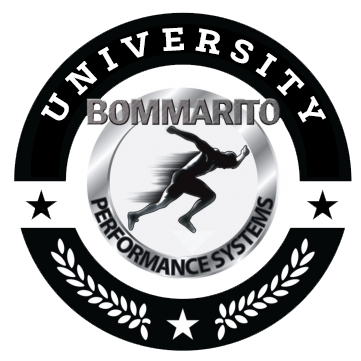For any upper-body strengthening program to truly be efficient, there must be proper joint preparation. This is beyond just a standard “warm-up”. This is really focusing on preparing the joints for the motions that will be encompassed within the session. It’s also important to remember this type of preparation of the joints is a training system over time – not just to prepare for the succeeding workout. As with any warm-up / preparation, the stimulus can be overloaded over time, as the various systems of strength are increased and overloaded throughout the overall program.
The obvious basics of strengthening always centers on these main aspects – absolute strength, speed strength, dynamic eccentric loading, and reversal strength. No matter what the “theme of the day” is – one (or more) of these main four aspects are centered within two primary upper body motions – pressing strength, and pulling strength. To properly prepare joints for all aspects of strength with pressing and pulling motions, an understanding of all of the main joints and main joint motions for the upper body is essential:
- Shoulder flexion (to humerus parallel to ground)
- Shoulder flexion continued overhead
- Shoulder abduction
- Shoulder adduction
- Shoulder extension
- Scapular protraction
- Scapular retraction
- Scapular elevation
- Scapular depression
- Humeral rotation
There are many variations and subdivisions of each of these motions (such as shoulder horizontal abduction/adduction, elbow flexion/extension), but for simplicity purposes, the focus will be on these aforementioned motions.
No matter what form of the four main aspects of strength for either pressing motions or pulling motions encompassed within with exercises for the workout, a combination of each of these joint motions will be utilized. Hence, it is always good practice to encompass these motions with slow controlled tempos and isometrics at various ranges to properly warm-up and prepare for the workout. The following exercises use one or more of the motions described above. These exercises can be referenced in the Exercise Database section of the online University (Strength, Upper Body, Auxillary). Again, it is necessary to understand the following exercises can be overloaded over time – by increasing the load (or weight), increasing the tempo, and/or increasing the isometric hold at various angles.
Shoulder V-Raise (thumbs up) / Rotate
- Shoulder flexion (to humerus parallel to ground)
- Humeral internal/external rotation at a shoulder flexed position
- Isometric strengthening at a shoulder flexed position with isometric scapular retraction at this flexed position
- Shoulder extension
Shoulder T-Raise (palms down) / Shrug
- Shoulder abduction
- Scapular elevation
- Scapular depression
- Isometric strengthening in shoulder abducted position with isometric scapular retraction at this abducted position
- Shoulder adduction
Shoulder V-Y Raise (thumbs up)
- Shoulder flexion (to humerus parallel to ground)
- Continued shoulder flexion overhead
- Shoulder extension
- Isometric strengthening in shoulder flexed position with isometric scapular retraction at this flexed position
- Shoulder extension
Shoulder T-Raise / Rotate
- Shoulder external rotation
- Shoulder abduction in externally rotated position
- Shoulder internal rotation in abducted position
- Shoulder external rotation in abducted position
- Isometric strengthening in shoulder abducted position with isometric scapular retraction at this abducted position
- Shoulder adduction in externally rotated position
Scapular Pushups (hands)
- Scapular retraction
- Scapular protraction
Scapular Pushups (elbows)
- Scapular retraction
- Scapular protraction
- Note that this scapular retraction and protraction is with the intention of pressing isometrically into shoulder horizontal abduction. Because the entire forearm is on the ground, it’s easy to perform a good isometric contraction into horizontal abduction (pushing out) while the concentric/eccentric action of scapular retraction/protraction is occurring. This is the main difference between the Scapular pushups from the hands or elbows – the elbows allows for this unique intention, which changes the exercise completely.
As stated earlier, there are many different exercises and variations of exercises that can accomplish the goals of: preparing for the immediate workout; and develop an increased tolerance to loads of future workouts. This 6-exercise systems definitely is a great place to start because it encompasses isometric, concentric, and/or eccentric strengthening / preparation of all motions of the shoulder and scapular required during any variation of exercises for pressing strength and pulling strength. Examples:
- Standard bench/board/floor press exercise – there is isometric contraction of the scapular retractors, with concentric shoulder horizontal abduction and elbow extension; with slight scapular protraction at the end of the press.
- Standard rowing exercise – there is scapular retraction, with concentric shoulder extension (and possibly shoulder horizontal abduction, depending on the row variation) with elbow flexion; and isometric contraction of the scapular retractors during the eccentric action of the row with scapular protraction at the end of this eccentric
- DB pressing/rowing – depending on the variation of the use of the DB press or row, there can be humeral internal/external rotation involved.
This provides a great basic summary of the actual joints (and joint motions) involved in the primary exercises during a typical upper body workout. An efficient way to prepare for increased loads of pressing and pulling for the workout would be to “warm-up” with these joint motions with low loads, slow tempos, and isometric contractions at key points in the ranges of motion.

